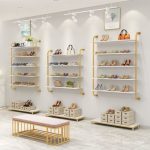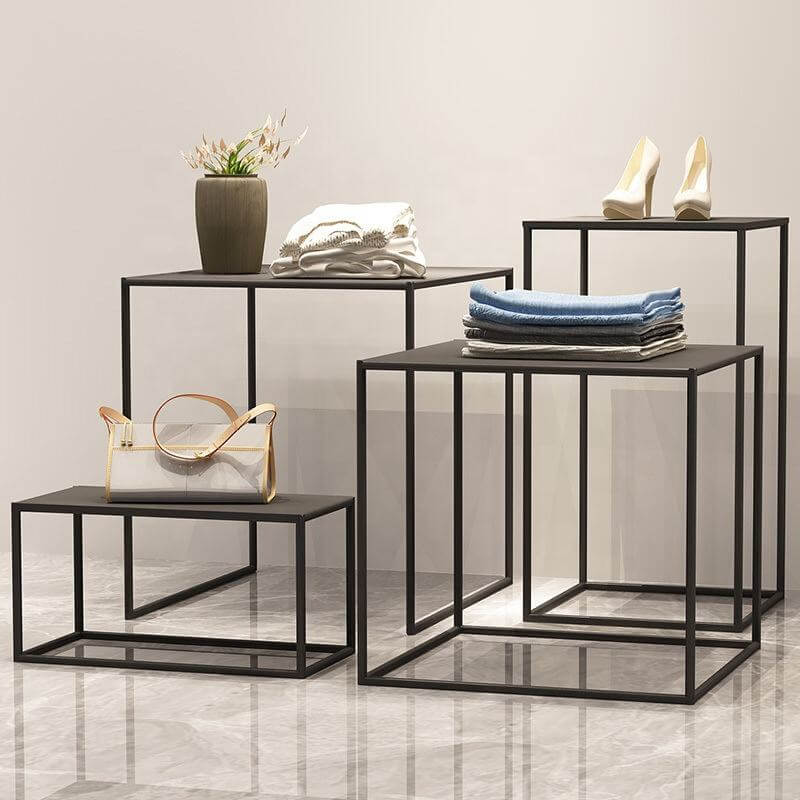
In the dynamic world of retail, where competition is fierce and consumer attention spans are short, the art of creating captivating retail displays has become a crucial element for success. A well-executed retail display is more than just a showcase of products; it’s a powerful tool that can entice customers, evoke emotions, and ultimately drive sales.
By mastering the art of retail display creation, you can unlock a world of possibilities, from increasing foot traffic and boosting impulse purchases to fostering brand loyalty and enhancing your overall customer experience. In this comprehensive guide, I will unveil the secrets behind successful retail displays, equipping you with the knowledge and strategies to create visually stunning and engaging displays that resonate with your target audience.
A captivating retail display is a harmonious blend of various elements, each playing a crucial role in capturing the attention and imagination of potential customers. To create a display that truly resonates, it’s essential to understand and masterfully combine these key components:
1. Prime Location and Visibility
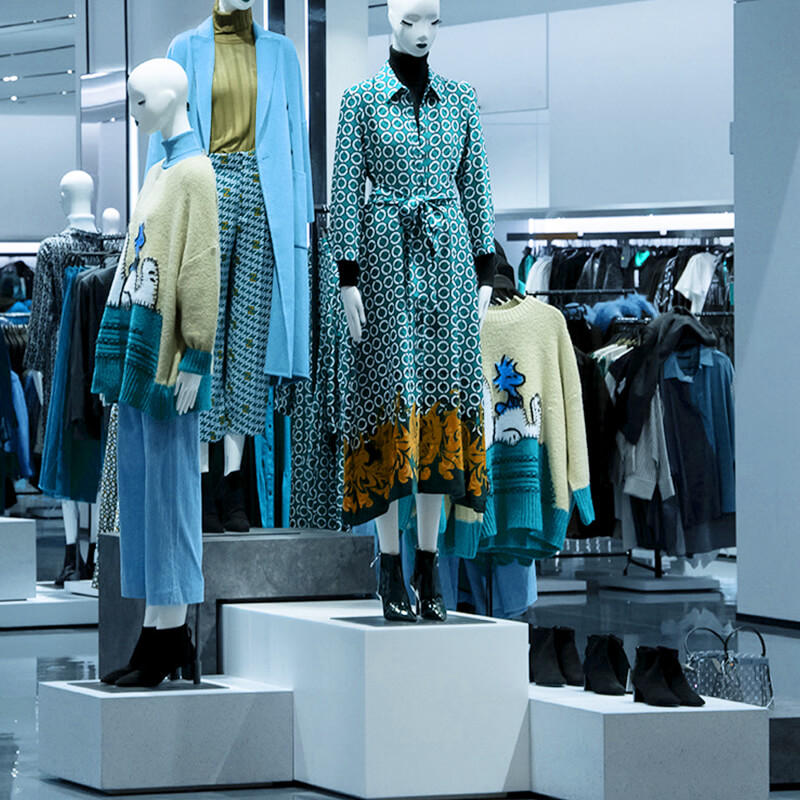
A prime location refers to a strategic spot within a retail environment that maximizes foot traffic and visibility. Here are the key reasons why prime locations are essential:
- High Foot Traffic: Locations in bustling areas or near entrances attract more customers, increasing the likelihood of engagement and sales. Retailers in these spots benefit from the natural flow of potential buyers who are already in the vicinity.
- Brand Perception: Being situated in a prestigious or popular area enhances a brand’s image, associating it with quality and reliability. This perception is vital in competitive markets where differentiation is crucial.
- Customer Journey: Understanding the path customers take in the store is essential. Placing displays along this journey, especially in high-traffic areas like near checkout counters or at eye level, can significantly influence purchasing decisions.
Strategies for Enhancing Visibility
To maximize the effectiveness of retail displays, visibility must be prioritized through various strategies:
- Effective Signage: Clear and attractive signage guides customers to products and promotions, enhancing their shopping experience. Signage should be consistent with the brand and visually appealing to capture attention.
- Lighting: Strategic use of lighting can highlight products and create an inviting atmosphere. Well-lit displays not only make products more attractive but also help set the mood for the shopping experience.
- Engaging Displays: Displays should tell a story or evoke emotions to draw customers in. Thematic or seasonal displays can create a connection with shoppers, encouraging them to explore further.
- Relocatability: The ability to move displays easily allows retailers to adapt to changing customer flows and preferences. This flexibility can help keep the shopping experience fresh and engaging for repeat customers.
By focusing on prime locations and employing effective visibility strategies, retailers can create compelling displays that attract customers and drive sales.
2. Visual Appeal
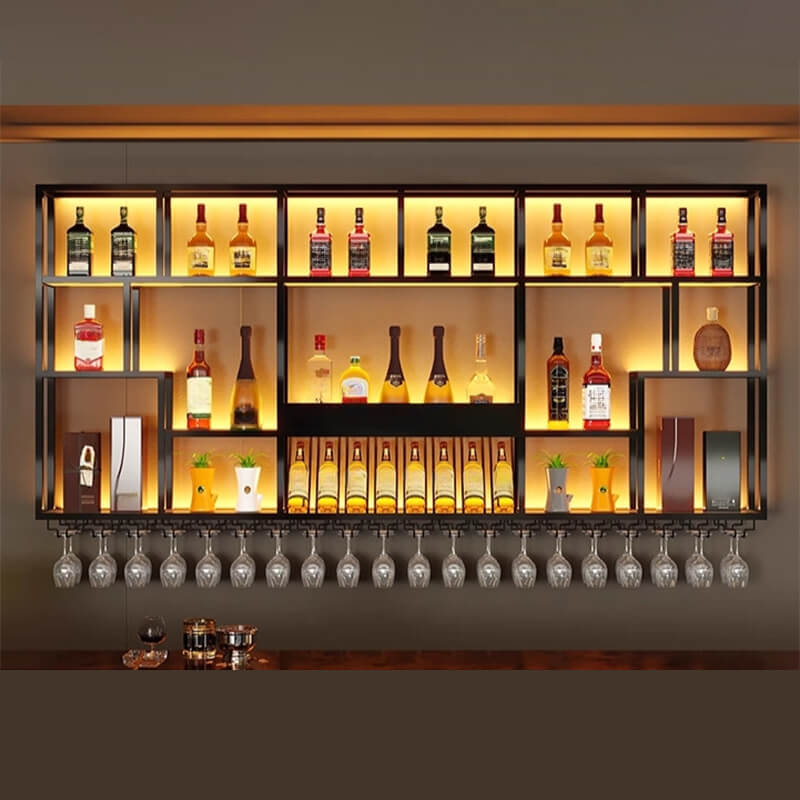
Visual appeal is a fundamental aspect of effective retail displays, as it plays a crucial role in attracting customers and influencing their purchasing decisions. Here’s an in-depth look at what constitutes visual appeal in retail displays and strategies to enhance it.
Importance of Visual Appeal
The primary goal of a retail display is to entice customers to engage with products. A visually appealing display not only captures attention but also communicates the brand’s identity and values. Here are key reasons why visual appeal matters:
- First Impressions: Customers often make snap judgments about a store based on its displays. An attractive display can create a positive first impression, encouraging customers to explore further.
- Emotional Connection: A well-designed display can evoke emotions and create a connection with shoppers, making them more likely to purchase. This emotional engagement can be a significant driver of sales.
- Brand Recognition: Consistency in visual elements reinforces brand identity. Displays that reflect the brand’s colors, themes, and messaging help customers recognize and remember the brand.
Strategies for Enhancing Visual Appeal
To create a visually appealing retail display, consider the following strategies:
Cohesive Color Scheme
Choosing a harmonious color palette that aligns with the brand can enhance visual appeal. Colors should complement each other and create a cohesive look that draws the eye without overwhelming the viewer.
Effective Lighting
Lighting plays a vital role in highlighting products and creating an inviting atmosphere. Using spotlights or accent lighting can draw attention to key items, while ambient lighting sets the overall mood of the display.
Clear Signage and Text
Incorporating informative and attractive signage guides customers and enhances their understanding of the products. Signage should be easy to read, visually appealing, and consistent with the overall design of the display.
Organized Layout
A neat and organized display helps prevent clutter, allowing customers to focus on the products. Using shelves, risers, or other display fixtures can create a structured arrangement that showcases items effectively.
Thematic Displays
Creating displays around specific themes, seasons, or events can make them more engaging. Themes can tell a story and resonate with customers, making the shopping experience more memorable.
Use of Props and Textures
Incorporating props and varying textures can add depth and interest to displays. These elements can create a more immersive experience, encouraging customers to interact with the products.
Regular Updates
Keeping displays fresh by regularly updating them with new products, themes, or arrangements can maintain customer interest and encourage repeat visits. A dynamic display signals to customers that the store is active and engaged.
3. Customizability and Brand-Centric Design
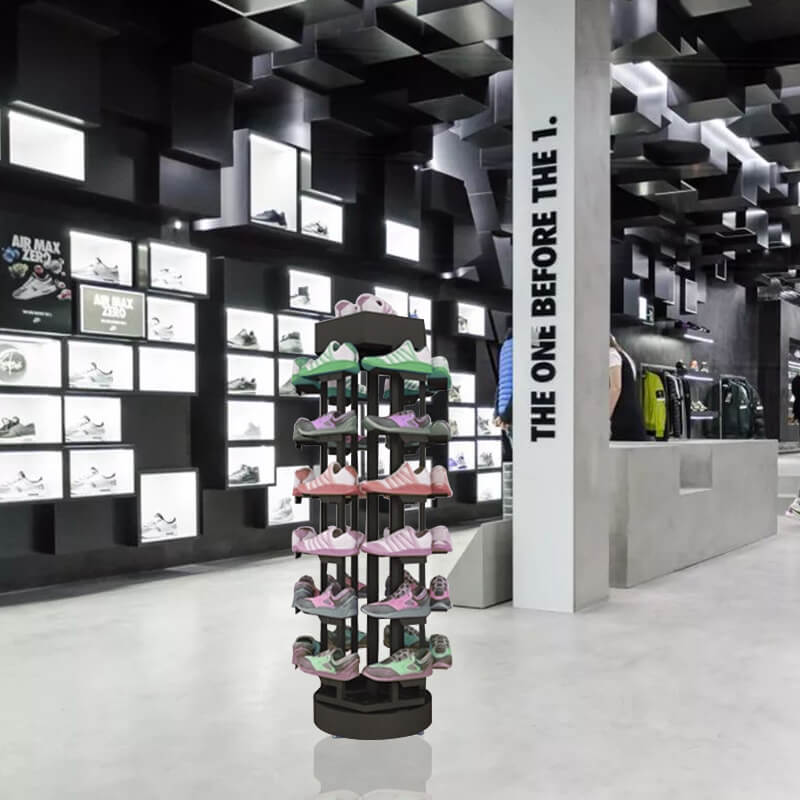
Customizability and brand-centric design are essential elements in creating effective retail displays. These factors not only enhance the visual appeal of products but also foster a deeper connection with consumers. Here’s an overview of their significance and how they can be effectively implemented.
Importance of Customizability
Custom retail displays allow brands to tailor their presentation to align with their unique identity and values. Here are some key benefits:
- Brand Identity Reinforcement: Custom displays can be designed to reflect a brand’s colors, logos, and overall aesthetic, making them instantly recognizable. This consistency helps reinforce brand identity and increases brand awareness among consumers.
- Personalization: With consumers increasingly seeking personalized experiences, custom displays can cater to specific demographics and preferences. This personalization can create a stronger emotional connection with customers, enhancing their shopping experience and encouraging brand loyalty.
- Adaptability: Custom displays can be designed to fit various retail environments and product types. This adaptability allows brands to optimize their presentation for different locations, whether in-store, at trade shows, or online.
Strategies for Brand-Centric Design
To effectively implement brand-centric design in retail displays, consider the following strategies:
In-Depth Brand Research
Understanding the brand’s mission, values, and target audience is crucial. This research informs the design process, ensuring that the display resonates with consumers and communicates the brand’s story effectively.
Creative Development
Engage a team of designers to brainstorm and develop innovative display concepts. Collaboration can lead to unique designs that stand out in a competitive market, making the display not just a product showcase but a storytelling medium.
Use of Technology
Incorporating technology, such as interactive elements or digital screens, can enhance customer engagement. These features can provide information about products, promotions, or the brand’s values, creating a more immersive shopping experience.
Material Selection
Choosing materials that align with the brand’s ethos (e.g., eco-friendly options for sustainable brands) can enhance the overall message of the display. Custom materials can also be tailored to fit specific design needs, whether for aesthetics or functionality.
Seasonal and Thematic Updates
Regularly updating displays to reflect seasonal themes or new product launches keeps the shopping experience fresh and engaging. This not only attracts repeat customers but also demonstrates that the brand is active and responsive to trends.
4. Appropriate Sizing
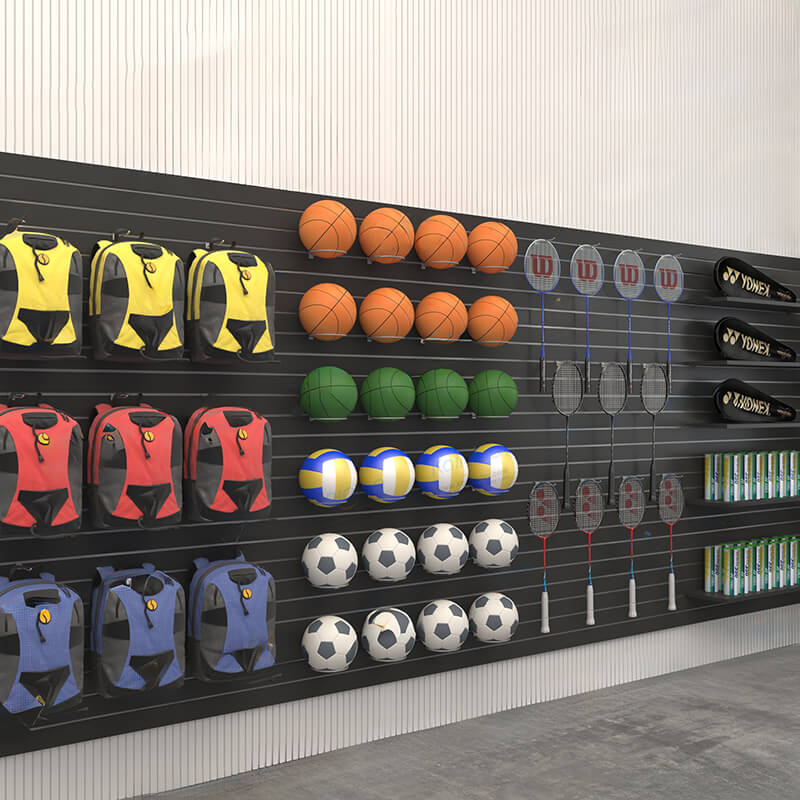
Appropriate sizing is a critical factor in the effectiveness of retail displays. It influences not only the aesthetic appeal but also the functionality and accessibility of the products showcased. Here’s a detailed examination of why sizing matters and how to determine the right dimensions for retail displays.
Importance of Appropriate Sizing
Visibility and Accessibility
The size of a display impacts how easily customers can see and access products. Displays that are too tall may hinder visibility, especially for shorter customers, while those that are too low may not attract attention. Ideally, the focal point of a display should be at or near eye level, which is generally between 5 to 6 feet for most adults. This positioning maximizes engagement and encourages interaction with the products.
Space Optimization
Retail environments often have limited space, making it essential to use that space efficiently. A well-sized display with a compact footprint allows for better placement in high-traffic areas without overwhelming the store layout. Smaller displays are particularly advantageous in convenience or specialty stores where space is at a premium.
Product Presentation
The size of the display should complement the dimensions of the products being showcased. For instance, a display designed for hanging items must consider the length of the products, while shelf displays need to account for vertical clearance to facilitate easy access. Proper sizing ensures that products are presented attractively and practically, enhancing the overall shopping experience.
Strategies for Determining Appropriate Sizing
Understand Product Dimensions
Before designing a display, gather comprehensive measurements of the products, including width, depth, height, and weight. This information is crucial for creating a display that can adequately support and showcase the items without appearing cluttered or sparse.
Consider Retailer Specifications
Many retailers have specific guidelines regarding display sizes, including height and footprint restrictions. For example, floor displays in some stores may not exceed 56 to 72 inches in height. Understanding these specifications helps ensure compliance and increases the likelihood of display acceptance.
Target Audience Consideration
When determining display height, consider the demographics of the target audience. For instance, displays aimed at children should be shorter, while those targeting adults can be taller. Aiming for a height that accommodates the average customer will enhance visibility and accessibility.
Balance Between Clutter and Sparsity
Finding the right balance in the number of products displayed is essential. Too many items can create a cluttered appearance, while too few can make the display look uninviting. A well-sized display should allow for a clean, organized presentation that encourages customers to engage with the products.
5. Cleanliness and Maintenance
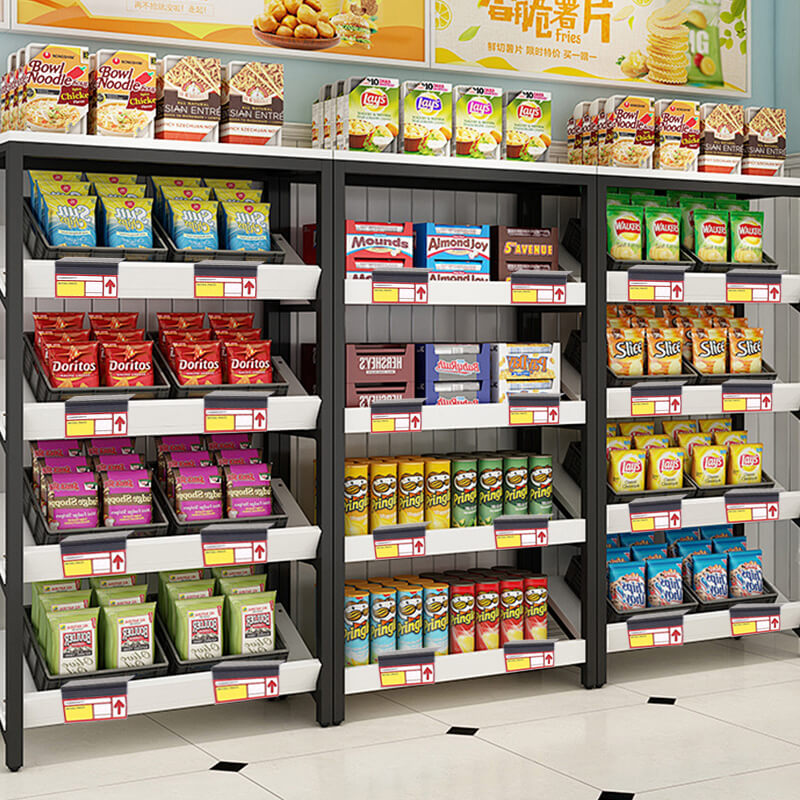
Cleanliness and maintenance are vital aspects of retail displays that significantly impact customer experience and sales. A clean store not only enhances the visual appeal of products but also fosters a positive shopping environment. Here’s an exploration of why cleanliness matters and how retailers can maintain high standards.
Strategies for Maintaining Cleanliness
Regular Cleaning Schedule
Establishing a routine cleaning schedule is crucial. Tasks should include sweeping, mopping, dusting surfaces, and sanitizing high-touch areas. Daily cleaning routines help maintain a consistently clean environment and prevent dirt accumulation.
Employee Training
Training staff on proper cleaning techniques and the importance of maintaining cleanliness can foster a culture of hygiene within the store. Employees should be encouraged to take responsibility for keeping their work areas tidy and to report any cleanliness issues promptly.
Professional Cleaning Services
For comprehensive cleaning, many retailers opt to hire professional cleaning services. These specialists can provide deep cleaning and maintenance, ensuring that all areas of the store meet high cleanliness standards. This approach can be particularly beneficial in larger retail environments where maintaining cleanliness can be challenging.
Organized Displays
Keeping product displays organized not only enhances cleanliness but also improves the overall shopping experience. Retailers should regularly check displays to ensure they are tidy and well-stocked, avoiding clutter that can detract from the store’s appearance.
Focus on High-Traffic Areas
Prioritize cleaning in high-traffic areas, such as entrances, restrooms, and checkout counters. These areas are more likely to accumulate dirt and require more frequent attention to maintain hygiene standards.
6. Engagement Beyond Visuals
Engagement beyond visuals is a crucial aspect of retail displays that enhances the overall shopping experience. By appealing to multiple senses and incorporating interactive elements, retailers can create immersive environments that foster customer connection and drive sales. Here’s a closer look at how to achieve this.
Strategies for Enhancing Engagement
Interactive Displays
Incorporating interactive elements, such as touch-and-learn displays, allows customers to physically engage with products. This hands-on approach can include product trials, demonstrations, or functioning models, enabling customers to experience the product’s features firsthand.
Utilizing Technology
Technology can enhance engagement through digital displays, augmented reality (AR), and touchscreen interfaces. These technologies provide personalized information and experiences, allowing customers to explore products in a dynamic way. For example, AR can enable customers to visualize how a product would look in their own space before making a purchase.
Sensory Elements
Integrating sensory elements like scent and sound can significantly enhance the shopping experience. For instance, a bakery might use the aroma of freshly baked goods to draw customers in, while a spa-themed display might incorporate calming music to create a relaxing atmosphere.
Product Sampling
Offering samples, whether food, beauty products, or other items, allows customers to experience the quality of products before committing to a purchase. This strategy builds trust and encourages customers to make informed decisions based on their firsthand experience.
In-Store Events
Hosting events such as product demonstrations, workshops, or meet-and-greets can create a sense of community and encourage customers to engage with the brand. These events provide opportunities for customers to interact with products and staff, fostering deeper connections with the brand.
7. Understanding Customer Psychographics
Psychographics is a powerful tool for understanding your target audience on a deeper level. By studying the psychological characteristics, values, interests, and behaviors of customers, you can create more effective marketing campaigns that resonate with them. Here’s a closer look at how to leverage psychographics in your marketing strategy:
Key Psychographic Characteristics
When analyzing customer psychographics, consider the following factors:
- Personality traits: Introversion, extroversion, openness, conscientiousness, neuroticism, etc.
- Lifestyle and activities: Daily routines, hobbies, interests, media consumption habits, etc.
- Attitudes and opinions: Beliefs, values, social causes, political views, etc.
- Desires and goals: Aspirations, fears, motivations, decision-making drivers, etc.
- Buying behaviors: Purchase triggers, brand loyalty, price sensitivity, decision-making process, etc.
Collecting Psychographic Data
There are several methods for gathering psychographic data:
- Customer interviews: Conduct in-depth, open-ended interviews to uncover insights about customer motivations and behaviors.
- Surveys: Use a mix of multiple-choice and open-ended questions to gather quantitative and qualitative data on customer psychographics.
- Focus groups: Observe customer interactions and discussions to gain a deeper understanding of their attitudes and opinions.
- Social media monitoring: Analyze customer conversations, content engagement, and interactions on social platforms to identify trends and patterns.
Applying Psychographic Insights
Once you have collected and analyzed psychographic data, put it into action by:
- Creating buyer personas: Develop detailed profiles of your ideal customers based on their psychographic characteristics.
- Tailoring content and messaging: Craft content and messaging that resonates with the specific needs and preferences of each customer segment.
- Optimizing marketing channels: Identify the channels and platforms where your target audience is most active and engaged.
- Personalizing product recommendations: Use psychographic data to suggest products and services that align with customer interests and preferences.
- Improving customer experience: Leverage psychographic insights to enhance the overall customer experience and build loyalty.
By understanding and applying psychographics in your marketing strategy, you can create more targeted, effective, and engaging campaigns that drive business growth and customer loyalty.
Design a successful retail display with iYubo!
At iYubo, we understand the intricate art of creating captivating retail displays that not only attract customers but also foster lasting connections with your brand. Our team of experts specializes in designing custom displays that seamlessly blend the latest trends, cutting-edge technology, and proven marketing strategies to deliver unparalleled results.
Visit iYubo Custom today and unlock the full potential of your retail space. Our dedicated team will work closely with you to understand your unique brand identity, target audience, and business objectives, crafting a tailored solution that elevates your products and creates an unforgettable shopping experience.
Elevate your retail displays to new heights and watch your sales soar. Contact us now to schedule a consultation and embark on a journey towards retail success.
By mastering the art of lighting, storytelling, technology integration, and data-driven measurement, you can create retail displays that captivate, engage, and inspire your customers. At iYubo, we are committed to empowering you with the tools and expertise to unlock the full potential of your retail space, driving foot traffic, boosting sales, and fostering lasting brand loyalty.
More Posts:
Top 10 Retail Display Manufacturers in USA
Top 20 Display Rack Manufacturers 2024



